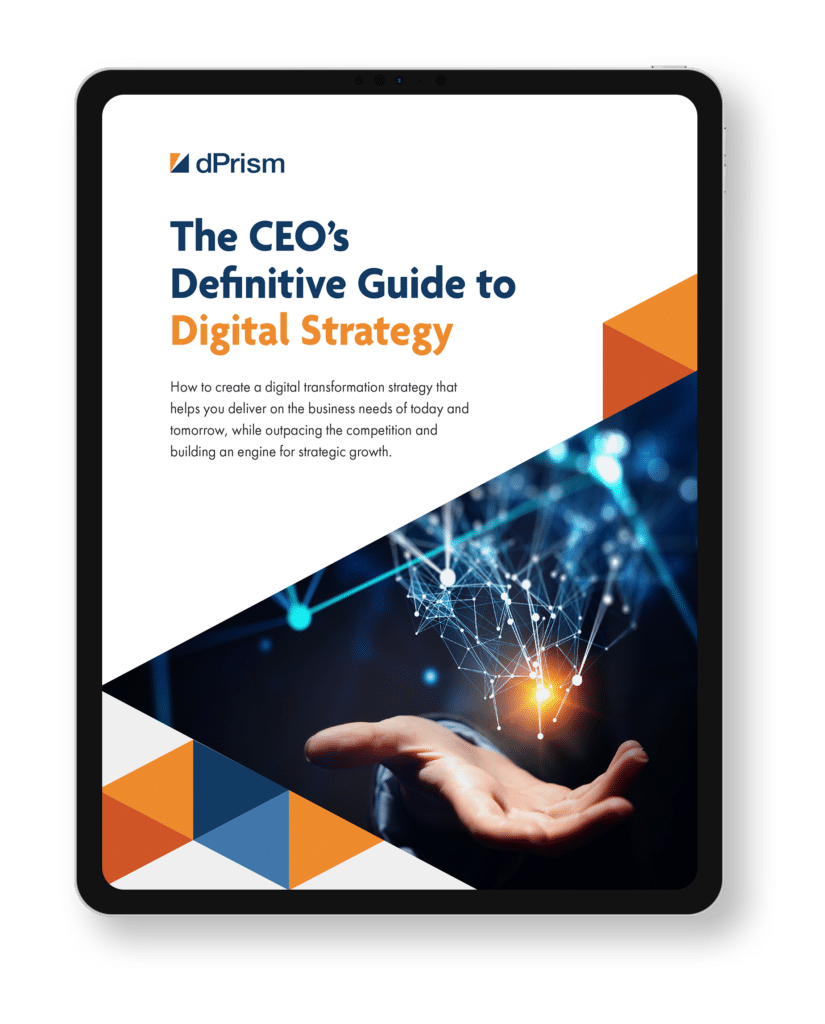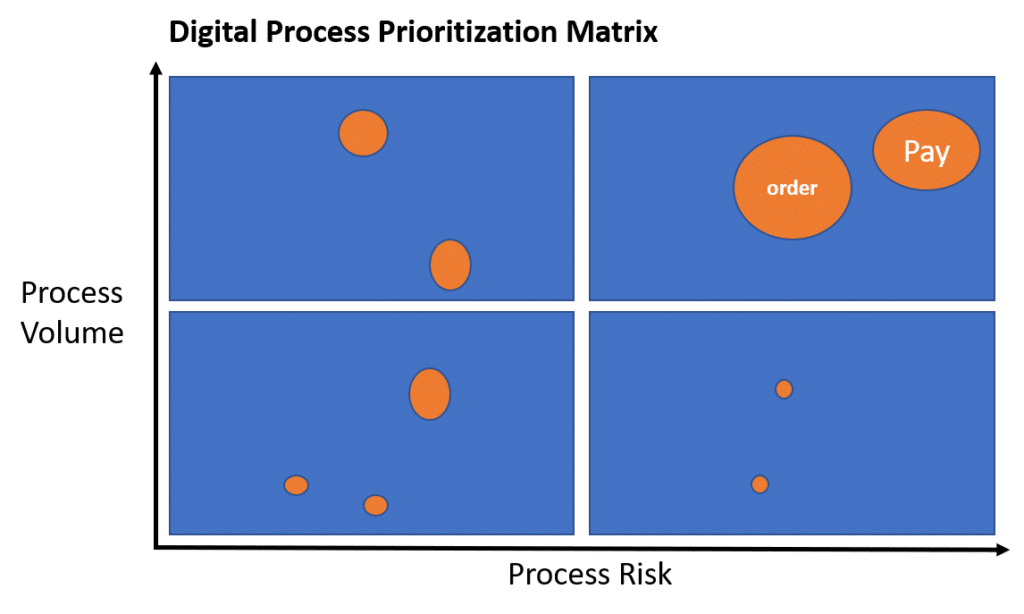Crises bring out the best in people but often bring out the worst in processes. Whether it is ancient Cobol programs not built to handle huge increases in demand or rigid stand-alone business systems not able to adapt to changing needs, many businesses are dependent on processes not flexible enough for today’s customer-centered, constantly changing world. These deficiencies are greatly amplified when an existential crisis such as the Covid-19 demands that organizations respond quickly with new ways to serve customers, often for their very survival.
Covid-19 is a wake-up call to CEOs to begin to modernize outdated business processes. In a real sense the COVID-19 crisis now gives leadership teams and boards ‘permission’ to fix underlying deficiencies in business processes that never previously made it to the top of the list. The current crisis is putting a spotlight on the need for organizations to be agile and responsive to change. Leaders need to take this opportunity to make sure lessons are learned and the right investments are now made to ensure their organizations are ready for the next challenge.
Being able to adapt, respond and maybe even thrive when a crisis occurs is why digital process improvement is a critical component of what we at Mod Op Strategic Consulting call a mature “Digital Posture”. This framework provides CEOs, boards and senior leaders a way to assess their organization’s digital maturity. Mod Op Strategic Consulting’s CTO, Jonathan Murray, provides an overview of the framework in his post: Now’s the time to check your digital posture.
Here’s a brief summary:
- End-to-end data-enabled, digital processes are one of the four facets of any organization’s Digital Posture. The others: Breadth and maturity of digital products and services portfolio, completeness of digital tooling and the sophistication of digital culture.
- C-suite executives and corporate board members should prioritize improvement of their organization’s digital posture now to absorb unforeseen market shocks, drive growth and improve competitive advantage.
- Organizations with a mature digital posture are more agile and resilient to external shifts.
- There are straightforward metrics to assess the maturity of your organization’s digital posture.
The digital enablement of business processes are as profound as any component of an organization’s operational capabilities. In a recent study, 87 percent of CMO respondents believe their industry and business will be disrupted by digital. Only 44 percent felt adequately prepared for these disruptions. This disparity exists in part because the rules have changed. In the past, business process management was primarily focused on improving operational efficiency. Today, data and digital processes are the primary drivers that enable organizations to develop portfolios of compelling digital products and services that satisfy customer needs at scale. This new emphasis on integrated data and digital platforms as the power underpinning long-term customer value has given rise to the discipline of digital process automation, or DPA.
The following factors account for the fast-growing shift to DPA:
- Customer centricity. Remember waiting three days for auto insurance approval? Fast, instant and personalized self-service is expected today. The “new normal” is that data-driven, routine transactions will have a high degree of automation.
- Cloud computing. Cloud offers an always-on, integrated and scalable computing model, allowing complex, secure interactions between data and services ecosystems.
- Proliferation of channels, tools and data. Advances in automation, machine learning and artificial intelligence can seamlessly integrate data from multiple sources and execute outputs with greater consistency and reliability.
- Speed of change. Technology and competition have accelerated expectations and the ability and need for organizations to adapt.
Why DPA Matters
Companies that improve their digital processes realize improvements in each of these four key performance indicators (KPIs):
- Customer satisfaction – More than a frictionless checkout, digital processes enable flexible journeys that personalize products and offerings and resolve issues before support is needed.
- Efficiency – Self-service and automation combine to provide unparalleled efficiency in operations and resource allocation and unlocks new products and services not possible in a manual world.
- Product quality – Companies leverage connected tools and data to deliver high-quality products that solve the needs of educated consumers.
- Time to market – Improvements are delivered at an accelerated pace, given the flexibility to integrate new methods, tools and data sets into core processes.
If these benefits sound appealing it is time to start planning your transition to DPA. These four steps will help guide your efforts:
1. Prioritize core processes. Many companies first look for improvements in the order-to-payment lifecycle because it is central to revenue. This isn’t a one-size fits all approach, however, and we recommend looking at a wider set of processes based on their frequency (volume) and potential cost/impact if they fail (financial, legal, CX). This prioritization matrix illustrates how this might work.
2. Map core processes: Now comes the labor-intensive part. Assign subject-matter experts to map your in-scope processes, including the following dimensions:
- Capture the who, what, when and required platforms for each process.
- Define the key metrics, service-level agreements and deliverables.
- Determine the process data flows: what data is created, updated, stored and retrieved.
- Name the platforms and teams that support this process as well as any known risks to process stability.
- Finally, conduct an honest assessment of the flexibility of the process to make changes or integrate relevant platforms and data.
3. Identify digital gaps: Now that you are familiar with the process, it is important to identify any gaps or issues identified internally, through customer feedback or market competition. These gaps typically fall into four types:
- Customer experience: Our processes work but create significant customer effort, cycle time, or inadequate information
- Data: Capture, format and integration issues silo key process data and can limit decision making and customer engagement tactics
- Flexibility and scale: Our processes work but are brittle to modification or volume changes
- Control and compliance: Our processes work, but we can’t support some compliance regulations of or control our process to the level we need
4. Plan your KPIs and roadmap: All that preparation pays off in a clear, results-based plan that adjusts for process and data interdependencies and addresses known process risks.
- Define the KPIs to achieve your objectives.
- Establish a data governance structure to better manage and monetize.
- Convene the entire team to align on priorities resources and timelines.
- Create a governance board to continue to manage the roadmap over time.
It is quite typical that digitally enabling one set of processes surfaces other supporting processes that will need to be automated further reduce bottlenecks, gaps in data-insight and manual steps. Thoughtful perseverance pays off, however, and over the course of a strategic digital process improvement initiative most organizations will realize significant value creation that increases efficiency, adaptability, and growth potential in any market conditions, from the inevitable disruption or crisis, to a booming robust economy.
Stay in touch for future discussions on digital posture
The principals at Mod Op Strategic Consulting have many decades combined experience in driving growth through digital strategy. Feel free to contact one of us directly to set up a conversation about how we might help your organization assess and implement the strategies required to build resilience and improve your organization’s ability to adapt and respond to the challenges ahead.
Sign up for the bi-weekly dBrief email:

Jonathan Murray, EVP & CTO
Jonathan is responsible for platform transformation engagements through a unique blend of business strategy, sales, marketing, operations and policy experience. With 25 years of experience in digital transformation, he turns strategy into results by enabling organizations to thrive in a digital world through empowered cultures and modern operating models.
Explore additional executive insights and guidance from our team of consultants, all of whom have decades of operational experience making exactly the kinds of decisions you now face, or browse the library of case studies.
Client Impact Story: Marketing Automation
Discover how Mod Op Strategic Consulting helped transform a leading law firm’s ability to produce and track its digital messaging and communication.
Client Impact Story: Improving Workflow Processes
Considering robotic process automation (RPA)? Review the process we used to introduce RPA to a leading financial publisher.

















